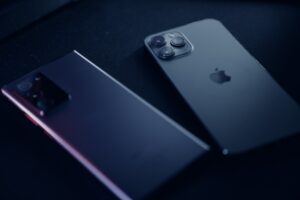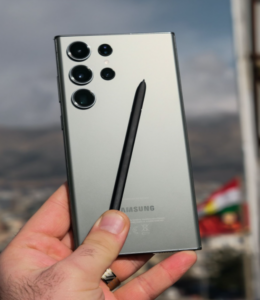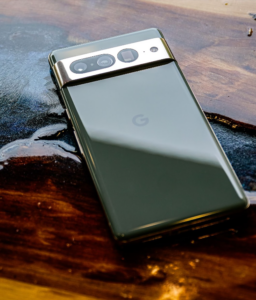
Are you considering making the switch from an iPhone to an Android device but don’t know where to start? The process can seem daunting, but with the right guidance, it can be a smooth transition. In this article, we’ll cover everything you need to know to make the switch from an iPhone to an Android smartphone. From backing up your data to transferring your contacts, photos, and other important information, we’ll guide you through the process step by step. We’ll also provide tips and tricks to make the switch easier, so you can start enjoying your new Android device with confidence. Whether you’re a long-time iPhone user or new to the smartphone game, this guide will help you make the transition to Android as seamless as possible.
Preparing Your iPhone
Backup Your Data
Before you kick off your move to the “dark side,” the first thing you need to do is backup all your data on your iPhone. Be sure to double-check, and make sure no important file was left out.
Here’s how to back up your data to iCloud.
- Connect your device to Wi-Fi.
- Open the “Settings” app on your device.
- Tap on your name at the top of the screen.
- Tap on “iCloud.”
- Scroll down to find “iCloud Backup” and tap on it.
- Turn on “iCloud Backup” if it’s not already on.
- Tap on “Back Up Now.” Your device will start backing up to iCloud.
Wait for the backup process to complete. This may take several minutes, depending on the size of your device’s data. Once the backup is complete, you can check it by going to “Settings” > “iCloud” > “Storage” > “Manage Storage.” You should see the backup listed there.
Turn Off iMessage
If you’re switching from an iPhone to an Android phone, it’s important to turn off iMessage on your iPhone before you make the switch. This will ensure that you don’t miss any text messages that may be sent to your phone number. To turn off iMessage, go to Settings > Messages > iMessage and turn the toggle off. You may also need to disable FaceTime in the same location.
Backup Your Data to Google Drive
If you don’t know, Google Drive is a cloud storage and file-sharing app made by Google. And backing up to Google Drive is an important but also optional step; once you read through the entire article, you’ll understand better.
The first thing you need to do if you’re moving to Android is back up your data to Google Drive. If you don’t already have the app, you can install it from the Apple App Store. Once you have the app, the next thing for you to do is sign in or create a Google account if you don’t have one.
Now that you’ve successfully signed into the app, you can start backing up your data. On the homepage, hit the three-bar menu in the top corner, then Settings>Backup>Start Backup.
How to Switch from iPhone to Android
This guide will contain sections on how to move to Samsung and Pixel phones.
Using Google Drive
Start setting up your new Android device. Once you hit the screen where you’re asked to sign into your Google account, don’t skip it. Instead, sign in and select what permissions you’re willing to give Google. After you’ve done this, you can continue your phone setup as you please. Once you’re done with your phone setup, check out Google Photos for your pictures, Contacts for your saved contacts, and the default calendar app for your calendar information.
Using Smart Switch
Smart Switch is an app made by Samsung to ease the transfer of files between smartphones when a user is moving. The app is clearly made with Samsung phones in mind, but Samsung didn’t lock the app to only their devices. That means you can get the app on the Play Store and download it on virtually any Android phone.
Once you’ve downloaded the Smart Switch app on your newly setup Android phone, open the app and select receive data, then choose the “iPhone/iPad” option. Next, you’ll choose if you want to do the data transfer wirelessly or with a wire (using a wire is faster).
You’ll be taken to a screen where you can choose the data you want to import. With this method, you can get your texts, files, and other things that couldn’t be backed up to Google Drive. Also, Smart Switch will help you download the Android versions of your iOS apps, and for those iOS apps that don’t have Android counterparts, it will suggest similar apps. Once you’ve selected the data to transfer over, hit Next and watch your data move into your new device.
Moving to a Samsung Phone
Switching to Samsung from an iPhone doesn’t require nearly as much work as most other Android devices. Here’s how to make the switch:
Get your old Apple iPhone and your shiny new Samsung phone. Begin the setup process for your new Samsung Galaxy device. Eventually, during the setup process, you’ll be taken to a screen where you’ll be asked to select if you want to copy your old data or not. On that page, hit “Next.” Next, Smart Switch will be downloaded to your Galaxy phone. Once the app is done installing, it’ll open to a new page. On said new page, choose “iPhone/iPad,” as it’s an iPhone you’re receiving data from. Now, you can choose to connect the phones together with a cable for the data transfer, or you can use your iCloud backup if you don’t have a cable. A word of advice: you’ll be better off getting a cable (USB-C to Lightning) than using your iCloud backup.
Using iCloud
Log in to your Apple ID on your Samsung phone. Next, you’ll be presented with a list of files that can be transferred to your new phone. Select your choices and hit “Transfer.” Then you can continue your new phone setup while the transfer works in the background.
Note: Your messages won’t transfer with this method.
Using a Cable
Once you plug in your iPhone and Samsung, you’ll see a pop-up on your iPhone. Hit “Trust.” Next, you’ll see a screen where you can choose all the files that can be transferred to your new phone. And yes, your messages were included. As for your apps, Smart Switch will help you download the Android versions of them or suggest similar apps for those that aren’t available on Android. You can even choose to move your entire home screen, including your wallpapers, with Smart Switch. So all your apps will be arranged as they were on your iPhone.
Moving to a Google Pixel Phone
Much like Samsung, when you’re switching over to a Pixel from an iPhone or any phone for that matter, you’ll get the option to copy your data from your former mobile phone to your new Pixel phone during setup.
To copy your data over to your new Google Pixel phone, you’ll need a quick switch adapter or a Lightning to Type-C cable. Once you plug it in, your Pixel phones will first scan for copyable data on your iPhone, then you’ll be taken to a page where you can see the copyable data (your messages included), and you can then select the ones you want to copy. Just like on Samsung phones with Smart Switch, Android versions of your iOS apps will be downloaded. Of course for those that don’t have Android counterparts, you’ll be suggested similar apps. Once the transfer process begins, you can continue setting up your Pixel phone.
Here’s Our Advice…
Now we know how hard and uncomfortable it can be to move away from the iPhone and maybe even the Apple ecosystem (especially if that’s all you’ve ever known) and then get used to a new phone. So here are a few tips to get you started on your Android journey:
- Use Google Assistant: Google Assistant is built into many Android devices and can be activated by saying “Hey Google” or pressing and holding the home button. Use it to send texts, make calls, set reminders, and more.
- Customize notifications: Android allows you to customize how you receive notifications from each app. You can choose to receive them silently, with a sound, or with a vibration. You can also choose to snooze notifications for a certain period of time.
- Use Split Screen: Many Android devices allow you to use split-screen mode, which allows you to run two apps side-by-side. To use this feature, click One way to do this on nearly all Android phones is to go to the Recent Apps menu, click the app icon at the top, and then select “Open in Split Screen.”
- Customize your home screen. Android devices also allow you to customize your home screen. You can add widgets, shortcuts, and change your wallpaper to make your device feel more personalized.
SmartphonesPLUS has a whole article devoted to our best Android Tips and Tricks. Check out our website to learn more.








